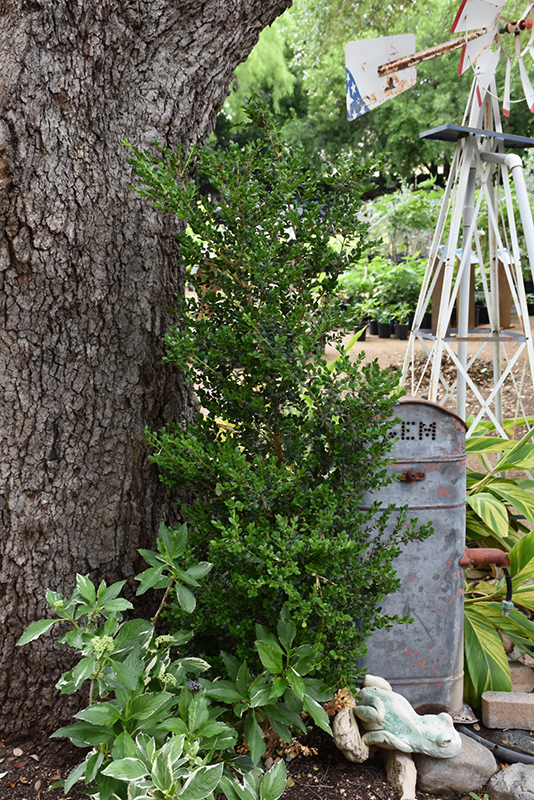Height: 9 feet
Spread: 24 inches
Sunlight:
![]()
![]()
Hardiness Zone: 4b
Description:
A very columnar variety with lustrous dark green leaves with lighter undersides; makes a great vertical accent, topiary, or garden detail plant; foliage will not brown in winter
Ornamental Features
Green Tower® Boxwood is primarily valued in the landscape or garden for its rigidly columnar form. It has dark green foliage with light green undersides. The round leaves remain dark green throughout the winter.
Landscape Attributes
Green Tower® Boxwood is a dense multi-stemmed evergreen shrub with a narrowly upright and columnar growth habit. Its relatively fine texture sets it apart from other landscape plants with less refined foliage.
This is a relatively low maintenance shrub, and can be pruned at anytime. It is a good choice for attracting bees to your yard, but is not particularly attractive to deer who tend to leave it alone in favor of tastier treats. It has no significant negative characteristics.
Green Tower® Boxwood is recommended for the following landscape applications;
- Accent
- Hedges/Screening
- General Garden Use
- Topiary
- Container Planting
Planting & Growing
Green Tower® Boxwood will grow to be about 9 feet tall at maturity, with a spread of 24 inches. It has a low canopy, and is suitable for planting under power lines. It grows at a slow rate, and under ideal conditions can be expected to live for approximately 30 years.
This shrub does best in full sun to partial shade. It prefers to grow in average to moist conditions, and shouldn't be allowed to dry out. It is not particular as to soil type or pH. It is highly tolerant of urban pollution and will even thrive in inner city environments, and will benefit from being planted in a relatively sheltered location. This is a selected variety of a species not originally from North America.
Green Tower® Boxwood makes a fine choice for the outdoor landscape, but it is also well-suited for use in outdoor pots and containers. Its large size and upright habit of growth lend it for use as a solitary accent, or in a composition surrounded by smaller plants around the base and those that spill over the edges. It is even sizeable enough that it can be grown alone in a suitable container. Note that when grown in a container, it may not perform exactly as indicated on the tag - this is to be expected. Also note that when growing plants in outdoor containers and baskets, they may require more frequent waterings than they would in the yard or garden. Be aware that in our climate, most plants cannot be expected to survive the winter if left in containers outdoors, and this plant is no exception. Contact our experts for more information on how to protect it over the winter months.
A NetPS Plant Finder tool

